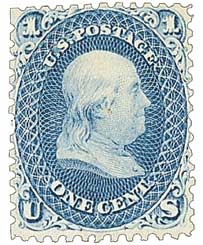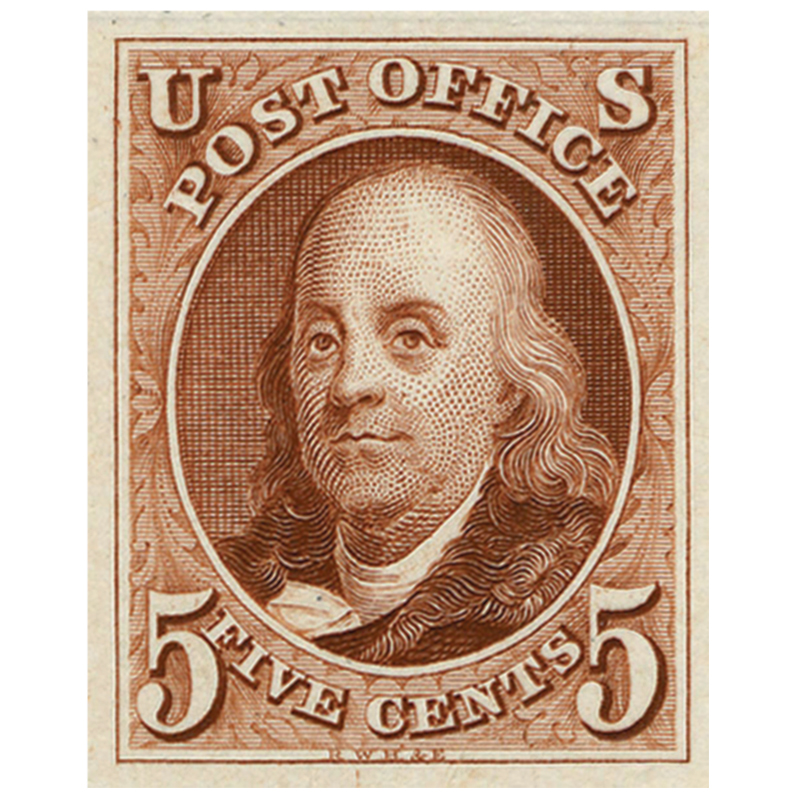
# 523-24 - Complete Set, 1918 Franklin High Values
1918 $2 and $5 Franklins
Happy Birthday Benjamin Franklin
Franklin was the son of a soap and candle maker. As a youth, he learned these trades but found them unsatisfactory. So he became an apprentice to his brother James, a printer, at the age of 12. It was in this apprenticeship that Franklin started what he considered his primary, lifelong occupation – printing.

During this time Franklin also wrote many articles that were submitted and published under the pseudonym “Silence Dogood.” These writings demonstrated his unique wit, humor, and insight. However, when his brother discovered that Benjamin was the author of the articles, he refused to publish them. The two brothers quarreled frequently, and at the age of 17, Franklin ran away and settled in Philadelphia, Pennsylvania.
Franklin’s arrival in Philadelphia has become a classic part of American folklore. The young man arrived in the city on a Sunday morning, tired and hungry. At a bakery, he asked for three pennies’ worth of bread, and received three loaves. He then bravely walked up Market Street with a loaf under each arm while eating the third. As he passed the door of the Read family, his future wife, Deborah Read, watched him walk by, and thought he made “a most awkward and ridiculous appearance.”
1918 $2 and $5 Franklins
Happy Birthday Benjamin Franklin
Franklin was the son of a soap and candle maker. As a youth, he learned these trades but found them unsatisfactory. So he became an apprentice to his brother James, a printer, at the age of 12. It was in this apprenticeship that Franklin started what he considered his primary, lifelong occupation – printing.

During this time Franklin also wrote many articles that were submitted and published under the pseudonym “Silence Dogood.” These writings demonstrated his unique wit, humor, and insight. However, when his brother discovered that Benjamin was the author of the articles, he refused to publish them. The two brothers quarreled frequently, and at the age of 17, Franklin ran away and settled in Philadelphia, Pennsylvania.
Franklin’s arrival in Philadelphia has become a classic part of American folklore. The young man arrived in the city on a Sunday morning, tired and hungry. At a bakery, he asked for three pennies’ worth of bread, and received three loaves. He then bravely walked up Market Street with a loaf under each arm while eating the third. As he passed the door of the Read family, his future wife, Deborah Read, watched him walk by, and thought he made “a most awkward and ridiculous appearance.”








